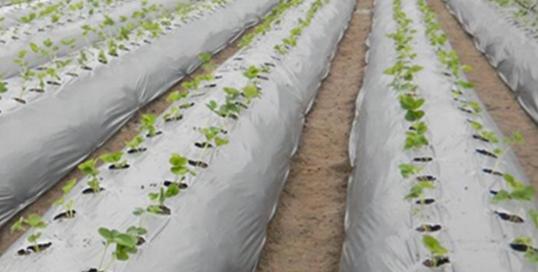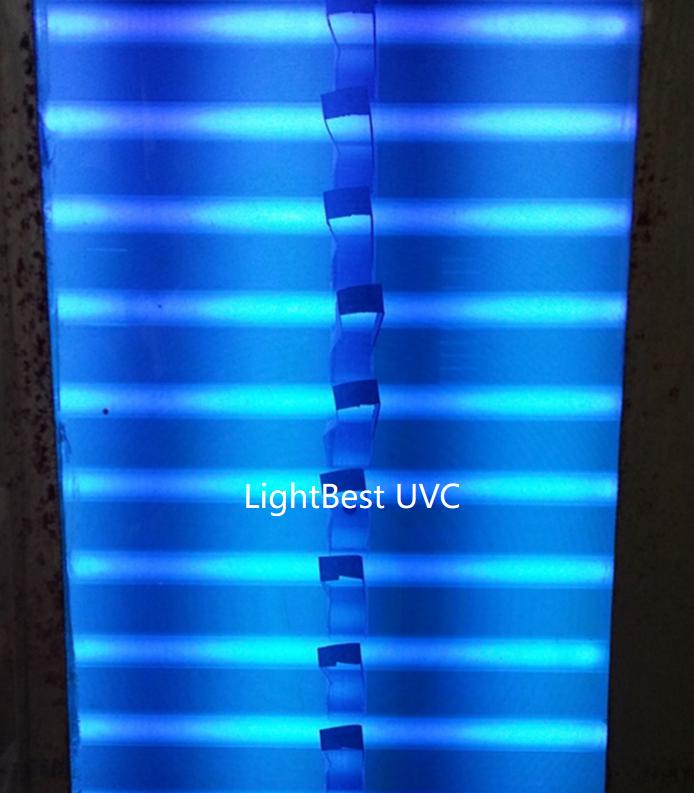In the field of agricultural cultivation, the use of agricultural plastic films is quite common, which raises a major question: how to degrade agricultural plastic films? Here, the application of ultraviolet lamps in the degradation of agricultural plastic films must be mentioned. UV lamps can degrade agricultural plastic films, and their degradation mechanism and effects vary depending on the type of agricultural plastic film.
Ⅰ.Mechanism of Agricultural Plastic Film Degradation by UV Lamps
1. Photochemical Reaction
Ultraviolet light (especially UV light with a wavelength of 290-400 nm) has high energy and can trigger photochemical reactions of polymer molecules in agricultural films. For example:
o Role of photosensitizers: Photosensitizers (such as transition metal compounds) are added to traditional PE (polyethylene) films. Under UV irradiation, photosensitizers absorb energy and generate free radicals, which cause the breakage of polyethylene molecular chains, forming low-molecular-weight compounds that are eventually decomposed by soil microorganisms.
o Direct photolysis: Some degradable films (such as PLA/PBAT blended films) contain UV-absorbing groups like carbonyl and double bonds. UV light directly damages these groups, leading to the breakage of molecular chains and the destruction of cross-linked structures.
2. Chain Reaction
Groups such as carboxylic acids, ketones, and hydrogen peroxide produced during the degradation process will further absorb UV light, forming new free radicals that attack the main polymer chain. This accelerates the reduction of molecular weight (usually to below 5000), making the plastic film brittle and disintegrated.

Ⅱ. Impact of UV Light on Different Types of Agricultural Films
1. Traditional PE Films
o Degradation conditions: Photosensitizers need to be added to achieve photodegradation, but the degradation rate is relatively slow under pure UV irradiation.
o Environmental impact: Long-term exposure will cause surface cracking and embrittlement, but complete degradation requires the combination of microbial action, which may take several years.
2. Degradable Films (e.g., PLA/PBAT Films)
o Rapid degradation: Under UV irradiation, PLA/PBAT films can undergo chain breakage and cross-linked structure destruction in only 10 days, with a significant decline in mechanical properties (such as reduced breaking strength).
o Synergistic effect: High temperatures (e.g., 37°C) will further accelerate degradation, while the degradation rate slows down significantly under soil burial conditions (where UV light is blocked).
3. Photo/Biodegradable Films
o Double mechanism: They combine photosensitizers and microbe-sensitive substances (such as starch). UV light induces the sensitization of photosensitizers, degrading synthetic resins into low-molecular-weight compounds, while microorganisms decompose the added substances.
o Environmental adaptability: They degrade rapidly after the induction period, making them suitable for crops that require short-term mulching.

Ⅲ. Practical Application and Challenges of UV Degradation of Agricultural Films
1. Application Scenarios
o Short-term crop cultivation: Photo/biodegradable films can degrade rapidly after the crop growth period, reducing recycling costs.
o High-altitude areas with strong sunlight: For example, the Yunnan Plateau has high UV intensity, and degradable films can effectively avoid residual pollution from traditional films.
2. Challenges and Limitations
o Degradation controllability: Environmental factors such as UV intensity, temperature, and humidity affect the degradation rate. Formula adjustments are needed to achieve "controllable degradation" (i.e., maintaining performance during the growth period and rapid aging after application).
o Material cost: The synthesis cost of copolymerized degradable films is high, limiting their large-scale application.
o Soil residues: Some degradation products may affect the activity of soil microorganisms, requiring long-term monitoring.
Ⅳ. Research Cases and Data Support
· PLA/PBAT films: After 10 days of UV lamp irradiation, chain breakage and cross-linked structure destruction lead to changes in mechanical properties, making the films brittle and disintegrated.
· PE films with added photosensitizers: The photolysis reaction is mainly Norrish-type photochemical reaction, and the molecular weight decreases to below 5000 in a short period, which can be decomposed by microorganisms.
· Environmental simulation experiment: The local temperature of mulched films rises sharply under strong UV irradiation, causing crop burns, while degradable films can effectively alleviate this problem.
Post time:2025-10-14 14:41:55

